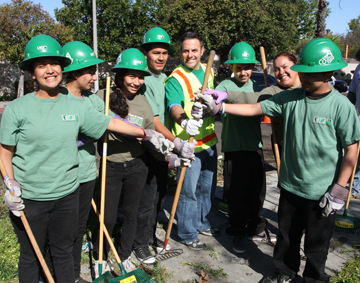 Councilman Joe Buscaino from District 15, joined law enforcement officers and other community activists Saturday to clean up an empty plot of land near 103rd Street and Grandee Avenue in Watts.
Councilman Joe Buscaino from District 15, joined law enforcement officers and other community activists Saturday to clean up an empty plot of land near 103rd Street and Grandee Avenue in Watts.
The plot was overgrown with weeds and had become a “magnet for trash, vermin and homeless encampments,” according to a release by Buscaino’s office.
“Enough is enough,” Buscaino said in the release. “We need to respond to the community’s concerns here. This is a main thoroughfare for students in the area. For them to see all this trash…completely unacceptable.”
Busciano was approached at the beginning of the month at a meeting of the Watts Gang Task Force and was joined at the cleanup by officers from LAPD’s Southeast Division, members of the Southeast Division Spanish Community Police and Advisory Board, the Watts Gang Task Force, LA Conservation Corps and the Bureau of Street Services.
“A cleanup like this, organized like this, hasn’t been done in years,” said Robert Martinez, Senior Lead Officer for LAPD’s Southeast Division, in the release.
He noted that a cleaner plot of land would bring positive changes to the lives of nearby middle school students who see the plot every day and will no longer have to look at signs of poverty and crime.









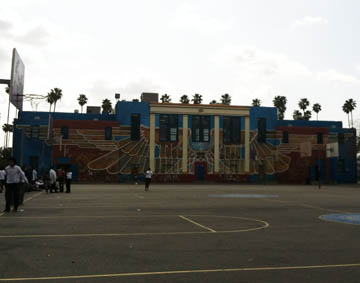 By Samantha Katzman
By Samantha Katzman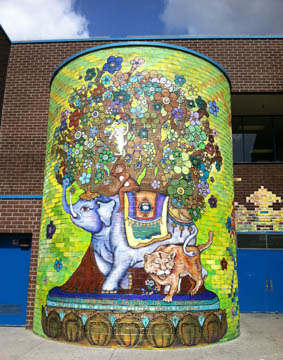 The school’s physical “rehabilitation” started with Schmerelson and Baltazar’s initial contact. At first, the concept was for Baltazar and his partner Melly Trochez to simply renovate the school, but with heavy backlash by taggers and vandals, it was decided that they would create entirely new works for and with the students.
The school’s physical “rehabilitation” started with Schmerelson and Baltazar’s initial contact. At first, the concept was for Baltazar and his partner Melly Trochez to simply renovate the school, but with heavy backlash by taggers and vandals, it was decided that they would create entirely new works for and with the students.  “You don’t want to leave people isolated,” Baltazar said.
“You don’t want to leave people isolated,” Baltazar said. 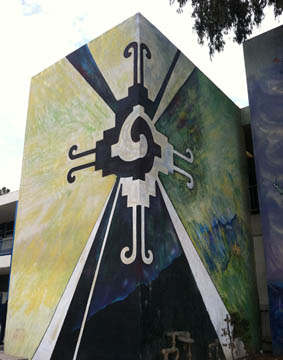 Modernization and improvements to materials, class sizes and class structure has resulted in an increase of 200 points in the Academic Performance Index (API), with scores increasing every year. But Schmerelson didn’t stop there.
Modernization and improvements to materials, class sizes and class structure has resulted in an increase of 200 points in the Academic Performance Index (API), with scores increasing every year. But Schmerelson didn’t stop there. 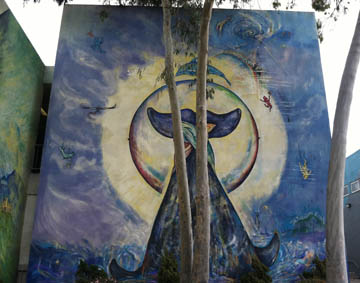 Baltazar was passionate about educating the children about the murals and their meaning so vandalism would not become a huge issue, and for the most part it was a success.
Baltazar was passionate about educating the children about the murals and their meaning so vandalism would not become a huge issue, and for the most part it was a success. 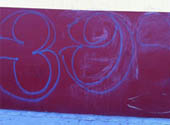 “Wait a second, there was an urban legend that there was a judge that was painting out graffiti,” Totten said.
“Wait a second, there was an urban legend that there was a judge that was painting out graffiti,” Totten said. 




